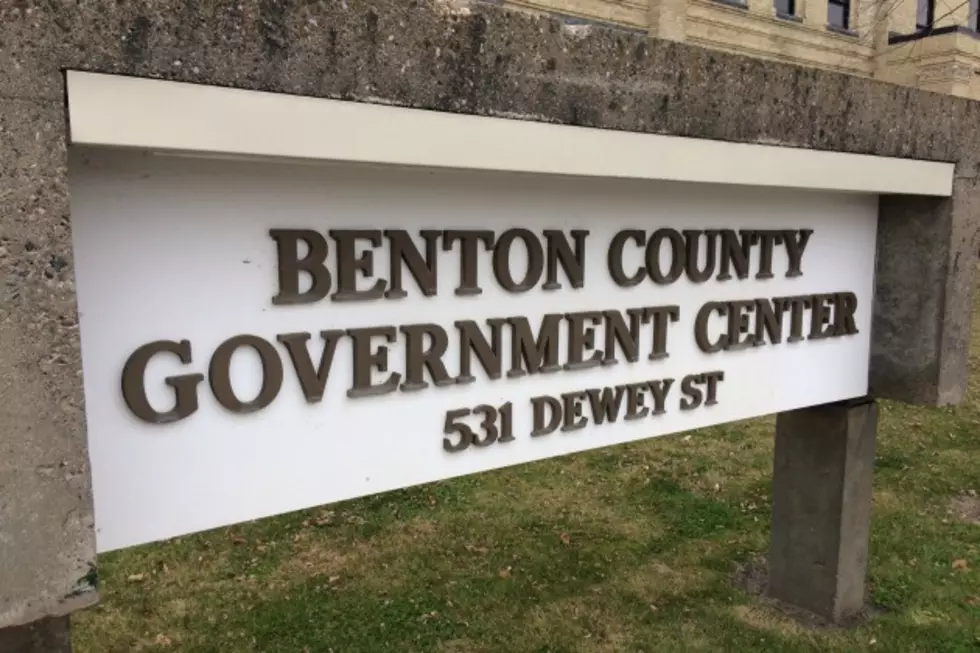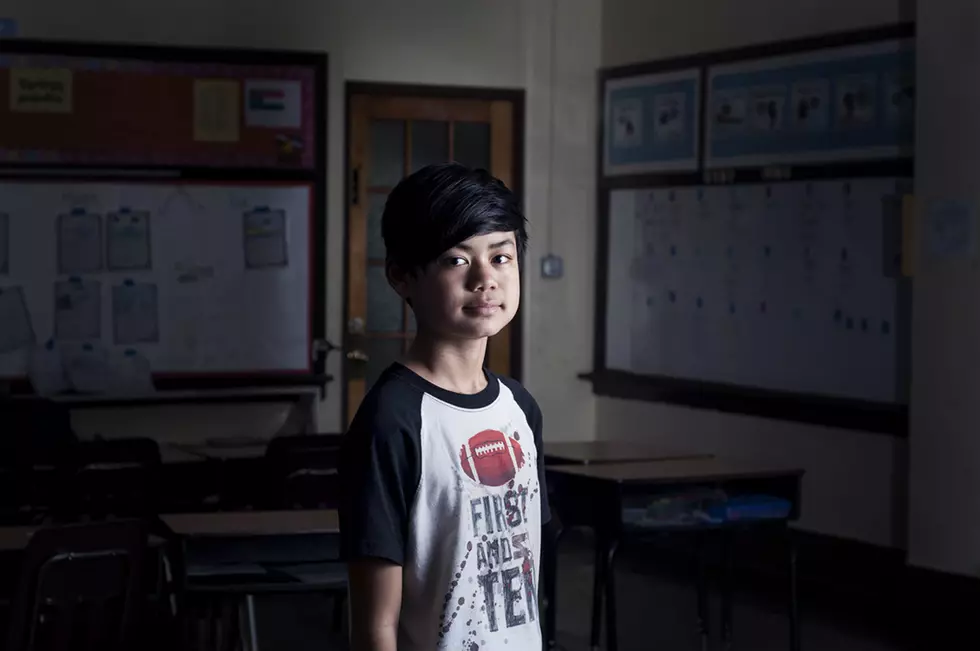
Officials Breakdown Local Funds and Roles of Refugee Resettlement
ST. CLOUD -- Officials are trying to clear the air on how much money goes into refugee resettlement on the state and local level.
Lutheran Social Service of Minnesota, Stearns County Public Health, Stearns County Human Services and the Minnesota Department of Human Services hosted a webinar Tuesday to talk, and answer the community's questions on refugee resettlement in St. Cloud.
Yusuf Abdi is the Director of Refugee Services at Lutheran Social Service of Minnesota (LSS). He says the organization resettled their first primary refugee in St. Cloud in March 2010 and they have been resettling refugees in the area since then.
LSS does have quarterly consultation meetings with stakeholders that are involved in the process of resettling refugees. Abdi says these meetings are scheduled but are not meant to be open to the public.
"The goal of these quarterly meetings is to better facilitate information sharing and learning among organization that are interested, or actively involved in, working with refugee populations. Our focus is to increase communication and seek solutions to meet the needs of refugee populations. This is a working group. Quarterly meetings were never intended to be an open public forum."
LSS will be hosting a quarterly meeting next month. The meeting will be open to the public. For information on this meeting contact Karin Blythe, 320-298-2200.
Part of the confusion centered around immigration and refugee status is not knowing the difference between an immigrant and a refugee. Rachele King is a state Refugee Coordinator for the Minnesota Department of Human Services. She says understanding the two terms can be tricky, she uses the international definition to best describe a refugee.
"Refugees have experienced serious hardship: They have fled their home country and cannot return because of a well-founded fear of persecution based on their race, religion, nationality, member of a social group or political opinion, and their home government is either unwilling or unable to protect them."
King says every year the US President and Congress must decide how many refugees will be admitted, priority populations to resettle and nationalities eligible for family reunification programs. For the fiscal year 2018, the maximum amount allowed into the United States was capped at 45,000.
She adds the refugee vetting process in the US is the most comprehensive of any entrance process the US currently has.
"The vetting involves eight federal offices, at least 20 reviews including security, background checks, biometrics, ICE scans, fingerprints, lots of different things."
The minimum time it takes to get through this screening process is 18-24 months. If anyone is deemed as a threat, they become ineligible.
Once refugees actually get to the United States and come to Minnesota they'll work with one of six resettlement agencies, in St. Cloud it's Lutheran Social Service.
King says each refugee is given a one time grant of $1,125 to help pay for initial expenses such as a rent deposit and beds. She says the other costs a refugee will need to start paying back is their travel expenses.
Each refugee's travel expenses to get to the US is paid for by a loan. They need to start repaying that loan 2-3 months after coming to the US. The loan is interest-free to help refugees pay it off quicker. It's also required that the refugee pays off the travel loan within their first five years living in the country.
Refugees also have to go through an extensive health screening process before and after they arrive. Mary Zelenak with Stearns County Public Health says the exam a refugee receives once they arrive in the county has two main purposes.
"To reduce health-related barriers to successful resettlement. And then to protect the health of local, state and national populations."
The refugee exam includes immunizations, a physical exam and lab work to rule out communicable diseases such as TB, HIV and several more.
In Minnesota in 2016 3,059 primary refugees were resettled, 45 percent of them coming from Somalia and 35 percent from Burma.
When it comes to the state's role in resettlement, King says participating states, such as Minnesota, don't control the number of refugees coming in.
"States do not actually resettle refugees. It is a federal program, that is administered locally by local resettlement agencies. So state government is actually not involved in that initial reception and placement program. We also don't control which refugees come to a state when refugees are resettled, or ultimately control the number of refugees that come to our state."
A role the state does indirectly play in helping refugees is offering welfare services but King says refugees that qualify aren't offered services because of their immigration status.
"They're not eligible for services because they are a refugee, they're eligible for services because they meet eligibility requirements that you or I or any other resident of Minnesota would need to meet."
Karin Blythe is a Resettlement Supervisor for LSS. She says nationally there are nine voluntary agencies (VOLAGS) that coordinate resettlement through all of the local organizations such as LSS. She says the VOLAGS work with the US State Department to determine how many refugees can be placed in a city.
"Allocations to St. Cloud are limited to family-reunification, thus the allocation pool for St. Cloud is a list of refugee individuals who have family living in St. Cloud with whom they would like to reunite. Primary refugees are drawn only from this allocations list."
St. Cloud resettled 231 refugees during the fiscal year 2017. So far in fiscal year 2018, five refugees have resettled in St. Cloud.
When it comes to how the county plays a role or helps fund refugee resettlement, Stearns County Human Services Administrator Melissa Huberty says there are nine public assistance programs offered through Stearns County.
Medical assistance, the supplemental nutrition assistance program, MN family investment program and refugee cash assistance are all federally funded programs.
State-funded programs include the group residential housing program, general assistance program and Minnesota supplemental assistance program.
On the county level, there are only two programs, interpreter services (which is partially reimbursed by the federal government) and public health coordination of refugee health assessments.
Huberty says the only benefit specifically targeted to refugees is the Refugee Cash Assistance Program, which is federally funded by the Refugee Resettlement Program and is 0.1 percent of all county benefit disbursements. She says the county does not fund refugee resettlement.
"There are no county funds budgeted for refugee resettlement programs."
If you would like to learn more about refugee resettlement you can reach out to any of the following:
- Yusaf Abdi - LSS - 612-879-5258
- Karin Blythe - LSS - 320-298-2200
- Melissa Huberty - Stearns County Human Services - 320.656.6000
- Mary Zelenak - Stearns County Public Health - 320-203-6942
- Rachele King - MN Dept. of Human Services - 651-431-2000
The webinar was prompted by St. Cloud City Council Member, Jeff Johnson's proposed moratorium on refugee resettlement in St. Cloud.
More From AM 1240 WJON




![Goligowski, Kendall Weigh in on Refugee Resettlement [PODCAST]](http://townsquare.media/site/67/files/2019/09/Janelle-Kendall-1.jpg?w=980&q=75)

![Protests Continue at Sherburne County Government Center [VIDEO]](http://townsquare.media/site/67/files/2019/07/20190724_154404.jpg?w=980&q=75)


